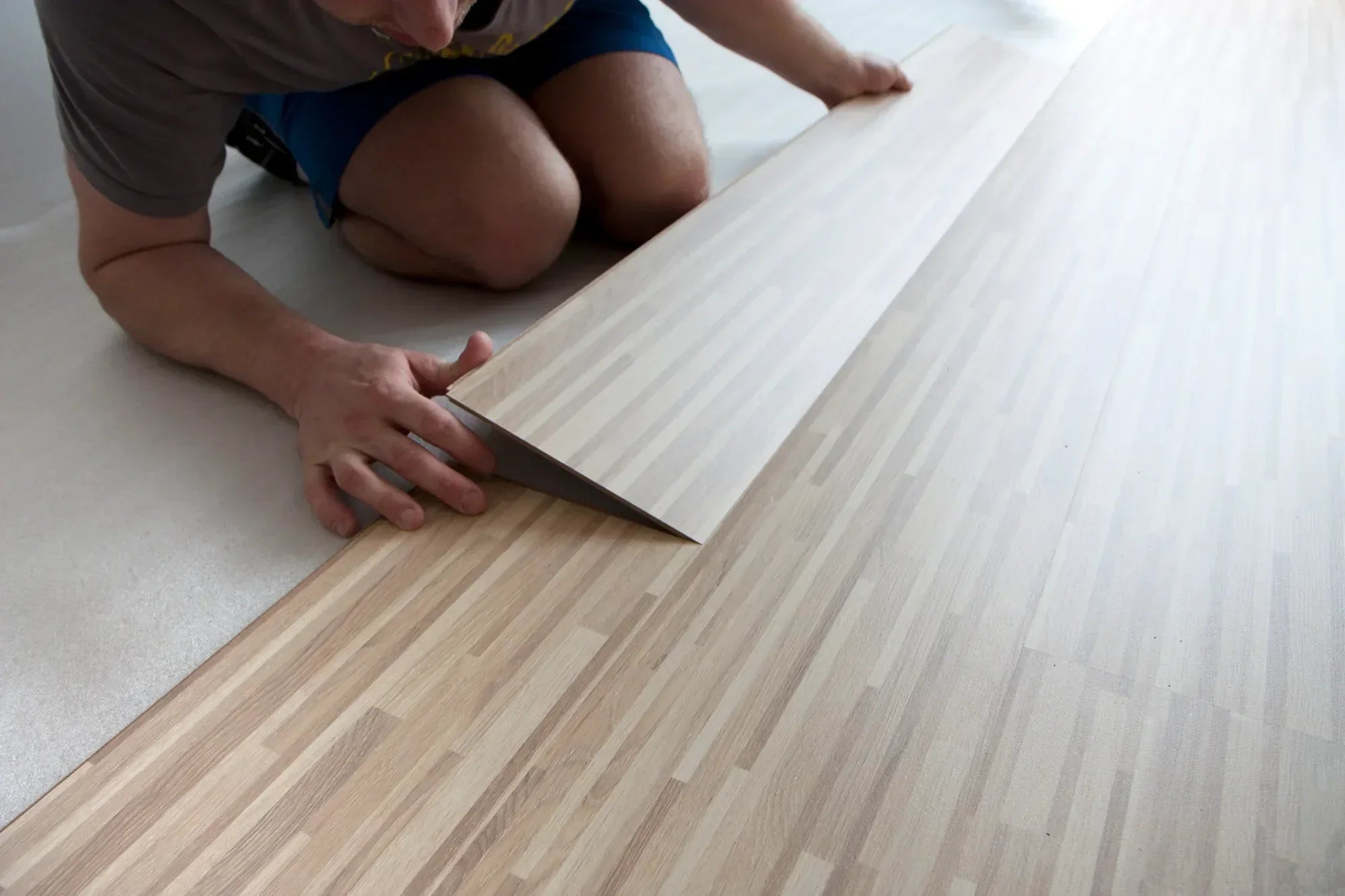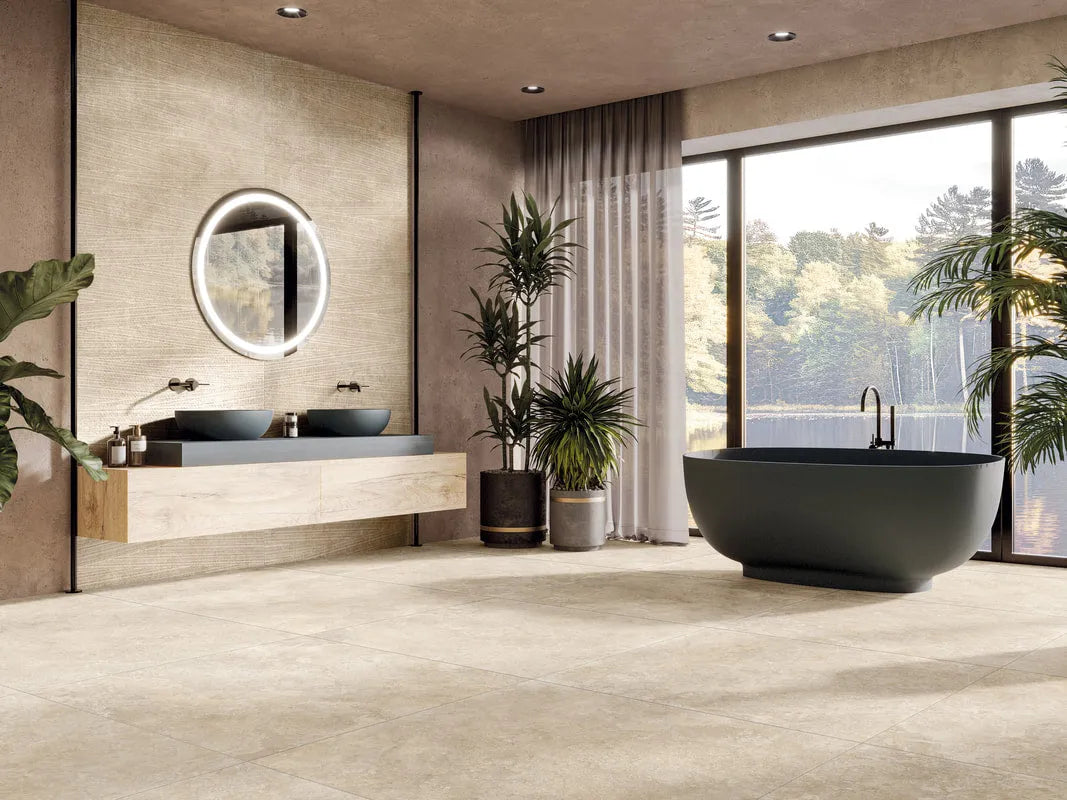Are you thinking about installing carpet in your home, but you're undecided between a traditional carpet roll or carpet tiles? Classic carpet is well-known. It's often chosen for its comfort and warm appearance, especially in bedrooms or living rooms. But carpet tiles, also called carpet tiles, are an increasingly popular option, even in residential settings. Less well-known, but full of advantages, they deserve a comparison. To help you make an informed choice, let's take a look at the real differences between these two carpet formats.
What are carpet tiles?
Carpet tiles, also called floor tiles, are small square or rectangular sections that are installed one by one on the floor. They are easy to install, often without glue, and can be replaced individually if stained or worn. Available in several textures and colors, they allow you to create a personalized look. They are a practical option, especially in high-traffic areas like basements or entryways.
Summary
- What are carpet tiles?
- Carpet tiles: a versatile and modern option
- Traditional rugs: warmth, comfort… and limits
- Why Carpet Tiles Are a Good Residential Choice
- Carpet tiles in the basement, entryway and active rooms
- Carpet Tiles vs. Traditional Carpet: Comparison Chart
- Conclusion
-
FAQ: Carpet Tiles for Home
Carpet tiles: a versatile and modern option
Carpet tiles are ideal for homes that require both comfort and flexibility. They can cover an entire room or just a section, depending on your needs. Their modular format makes it easy to replace a single tile if it becomes stained or worn, without having to redo the entire floor. They're a practical choice for families, especially in high-traffic areas like basements or play areas. Plus, the color and pattern options allow you to create a custom look without complicated renovations. Some models even mimic textures like sisal, wood, or wool, with a very natural look.
Traditional rugs: warmth, comfort… and limits
Rolled carpet is a classic in Quebec homes. We love it for its softness, warm appearance, and ability to make a room more welcoming. It's often used in bedrooms and living rooms, where comfort takes precedence over functionality. However, this type of carpet is more difficult to install, and if damaged, a large area often needs to be replaced. Maintenance is also more demanding, especially in high-risk areas like basements or entryways. Traditional carpet can also trap dust more easily, which isn't ideal for allergy sufferers.

Why Carpet Tiles Are a Good Residential Choice
For a practical everyday living space, carpet tiles offer several tangible advantages. They're easy to install, even for a novice DIYer, and don't require permanent adhesive. If a tile gets stained or worn, it can be replaced in minutes without affecting the rest of the floor. They're also a more sustainable choice in the long run, since you don't have to redo the entire room in case of damage. Their modularity makes them useful in homes where rooms often change purpose: playroom today, office tomorrow. Some models are also designed to improve the acoustics of a room, a real plus in open-plan homes.
Carpet tiles in the basement, entryway and active rooms
Certain areas of the home require a more robust floor covering, and carpet tiles meet this need well. In a basement, they tolerate moisture better than rolled carpet and can be easily removed in the event of water damage. In entryways, they resist dirt and wear from boots well, while maintaining a warm appearance. In a playroom, they provide a soft, safe, and easy-to-maintain surface. These qualities make them a practical choice for spaces that receive a lot of daily use. They are also useful for creating different visual zones in a large room, such as a play area separate from the reading nook.
📸 Image: Playroom with modular colorful carpet tiles
Carpet Tiles vs. Traditional Carpet: Comparison Chart
| Criteria | Carpet tiles | Traditional carpet |
|---|---|---|
| Facility | Easy, modular, no permanent glue | Complex, often done by a pro |
| Interview | Very simple, replaceable by section | More difficult, overall cleaning |
| Long-term cost | Cost-effective, localized replacements | Expensive if complete replacement |
| Decorative flexibility | Custom designs, mix of styles | Less variety once laid |
| Repairs | Replacement of a single tile possible | Entire carpet often needs to be changed |
| Recommended areas | Basement, entrance, games room, offices | Bedroom, living room |
| Moisture resistance | Better, depending on the model | More sensitive |
Conclusion
If you're looking for a practical, durable, and easy-to-maintain carpet option for your home, carpet tiles deserve your attention. Unlike traditional carpet, they adapt to the needs of each room, are easily replaced, and offer great style flexibility. Whether for a basement, entryway, or playroom, they combine comfort and functionality. To discover the available styles or get personalized advice, visit our showroom or contact the Emard Couvre-Planchers team. We're here to help you make the right choice.
FAQ: Carpet Tiles for Home
Do carpet tiles stay in place in a house?
Yes. Most models have a non-slip base or an installation system that keeps them securely in place. Even without permanent glue, they remain stable, especially in small spaces.
Can you install carpet tiles in a bedroom?
Absolutely. They're comfortable underfoot and offer a good level of insulation. With the right patterns, they can create a warm atmosphere, just like a traditional rug.
What is the difference in maintenance between a carpet and a carpet tile?
Rolled carpet is more difficult to clean if there are stains. Tiles, on the other hand, can be replaced one by one. This is much easier to keep your floor clean for a long time.
Is it more expensive than traditional carpet?
The initial price is sometimes a little higher, but the savings are realized over time. Less maintenance, less complete replacement: carpet tiles are often a better long-term investment.



